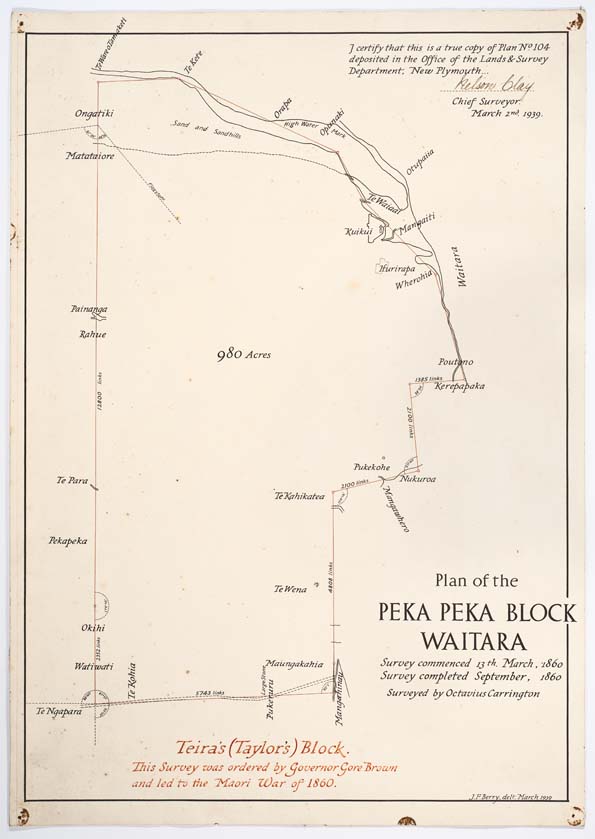
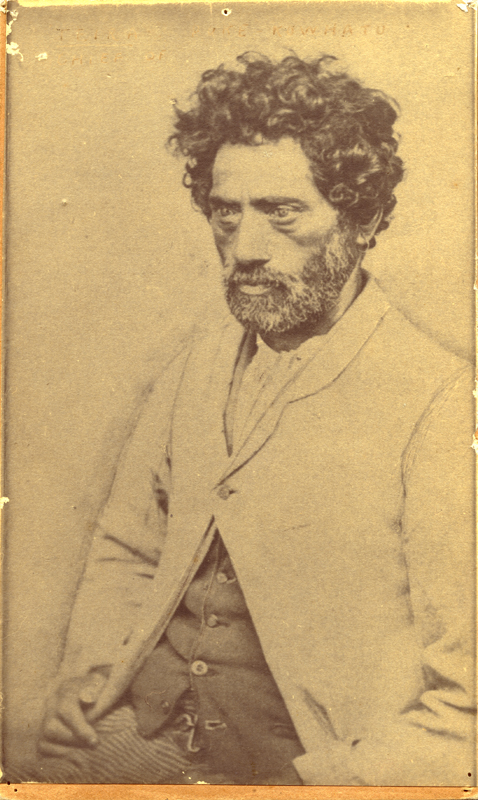
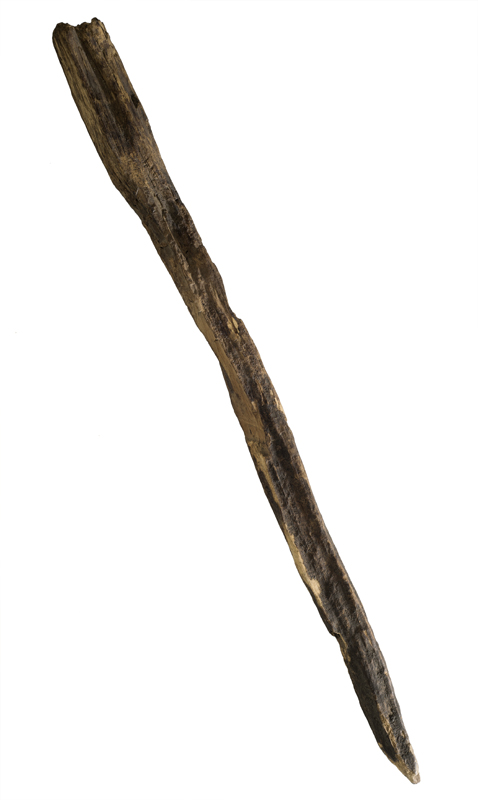
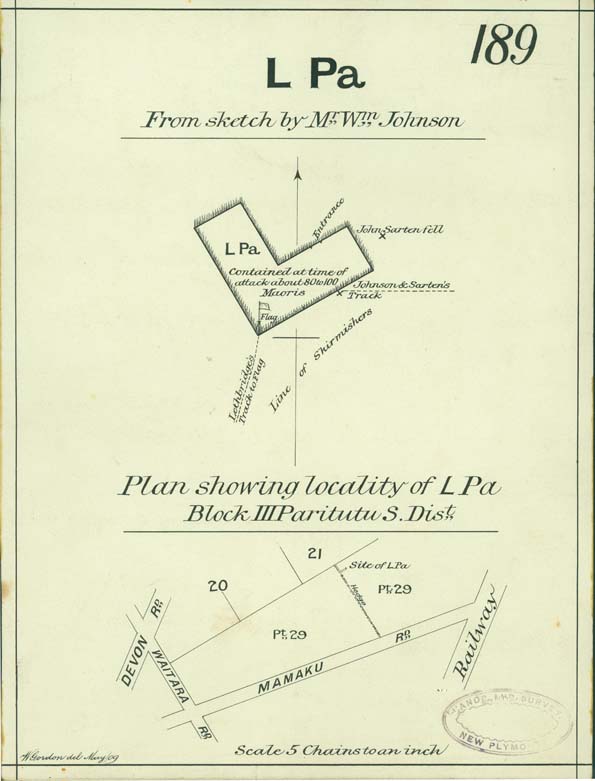
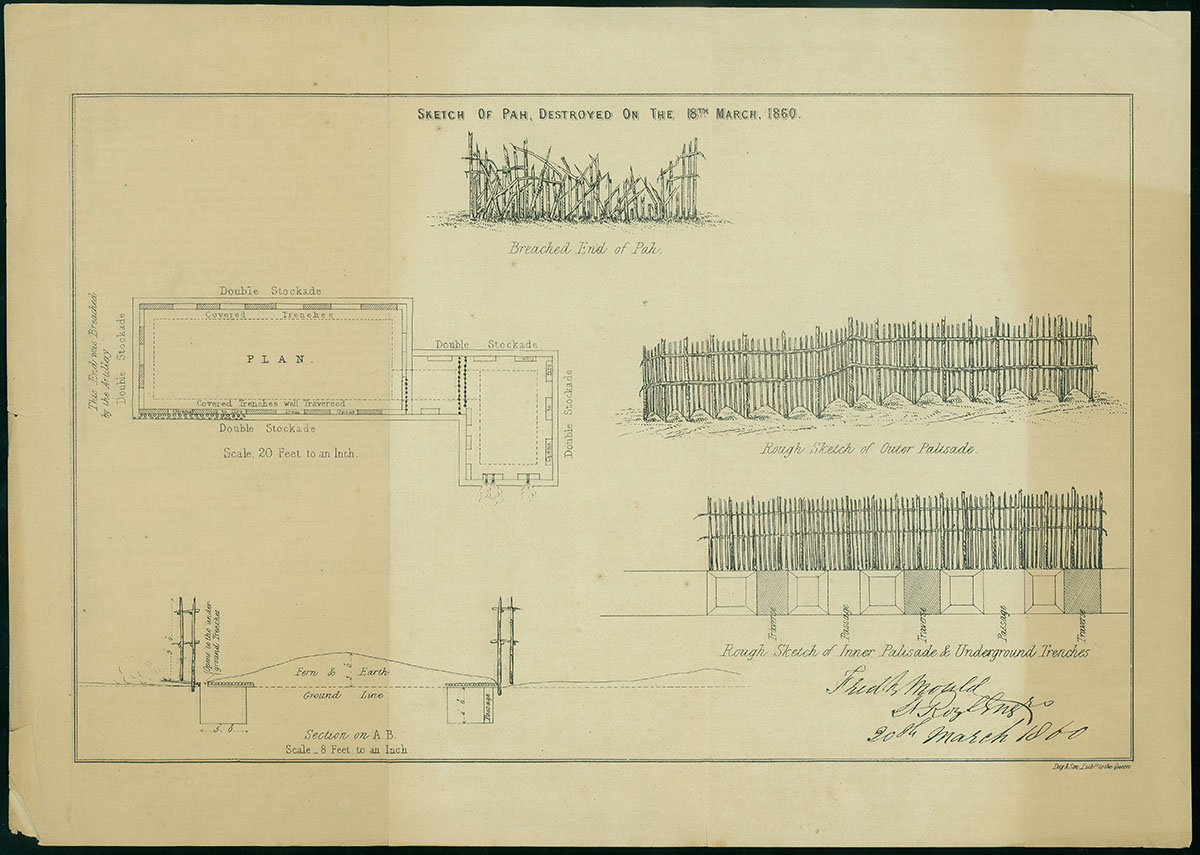
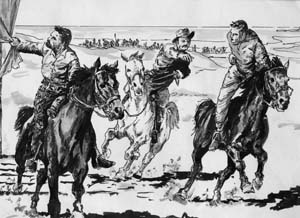
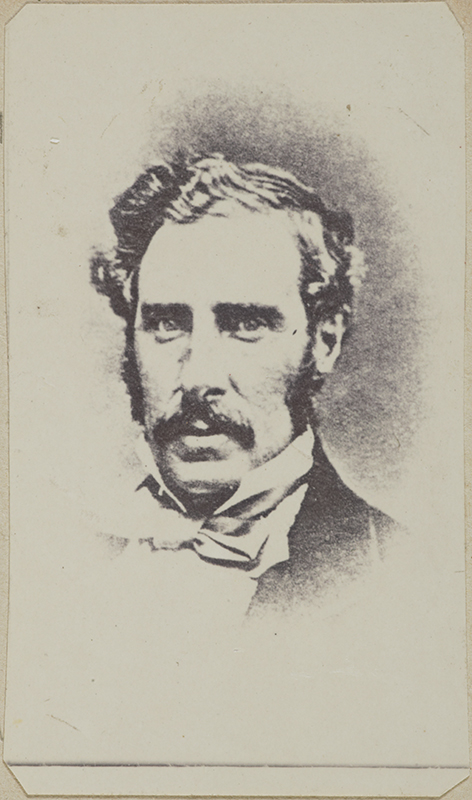
A death-bed request led Te Ātiawa chief Wiremu Kīngi Te Rangitaake to protect a controversial piece of Taranaki land, known as the Pekapeka block. As his father, Te Rere-ta-whangawhanga, lay dying, he reached out to his son and made him promise never to sell Te Ātiawa's tribal land in Taranaki.
His final wish and Te Rangittaake's fighting efforts were in vain. The land, where the township of Waitara has been built, was sold in what historians and Māori still see as a questionable transaction.
Victoria University's Peter Adds says the Pekapeka block is hugely significant in the nation's history. "It's the place where the New Zealand Wars started", says Adds. "It's the place where the original dispute arose and it was a dispute about the purchase of that land by the Crown from Te Ātiawa," he says. "The dispute is whether (Te Ātiawa man) Teira had the right to sell that land in the first place when it was recognised that Wiremu Kīngi was the paramount chief of the tribe."
The land in question is on the south side of the Waitara River, and encompasses about 600 acres (about 243 hectares), says Adds, of Te Ātiawa descent. Te Rangitaake, who became the tribe's paramount chief after his father's death, was determined to honour the old man's last appeal. So, in 1847, he returned to Taranaki with about 600 members of his tribe.
Before that, father and son had been part of the heke, or migration, of Te Ātiawa people to Wellington and the top of the South Island. Both men had also signed the Treaty of Waitangi, brought around by Crown representative Henry Williams, on 23 May 1840.
Back in Waitara, Te Rangitaake and his people settled on the Pekapeka block, Adds says. "The Government at the time was trying to convince them to move to the north bank, but they chose, quite deliberately, to live on the south bank, which was more their traditional lands. He lived there for a number of years and did well there, economically."
Throughout the 1850s, Te Ātiawa grew fruit and vegetables, which they sold to Pākehā settlers in the fledgling town of New Plymouth. They even transported some of the goods in trading boats, moving up and down the Taranaki coast. "The Māori communities were living all around New Plymouth and not letting them (the settlers) out.”
"During the 1850s, Māori people were becoming very worried about land alienation, generally. Their response to that was the formation of the Māori Land League, which according to the media, was a covert organisation designed to obstruct the selling of Māori land to Europeans."
Adds says Te Rangitaake was portrayed as the leader of that organisation. "He was vilified for that by Pākehā people. The settlers were wanting to get out into the land and to them this guy appeared to be preventing all that and so they had reason not to like him."
There were also tensions among Te Ātiawa people, with some tribal people selling land, but this was not backed by Te Rangitaake. "That created an internal struggle between sellers and non-sellers. This tended to be aligned through hapū (sub-tribe). Some hapū sold, some didn't."
One of the hapū was Ngāti Rāhiri, which Te Teira (or Taylor) belonged to. The clash between Te Teira and Te Rangitaake arose over love. "They had an argument about a marriage that Kīngi had vetoed," Adds says. "It was an arranged marriage to cement land ties. Kīngi (as paramount chief) said 'No' and Teira was annoyed and to get back at him, offered his land for sale to the chief crown purchasing agent, a guy called Donald McLean."
McLean, whose name graces the main street of Waitara, and Governor of the day, Thomas Gore Browne, accepted Te Teira's offer. "But with the full knowledge that Kīngi was the paramount chief and Teira did not have the rights there."
The Crown also knew that among Māori there was no such thing as an individual having the right to sell land. But the European settlers and Government wanted that block, so seized the opportunity offered. "The Waitara valley in particular, in dispatches, had been described as the future garden of New Zealand because of the soils and climate."
Te Teira agreed to sell the land, but Te Rangitaake stepped in and vetoed the sale. To push his point, he wrote a number of letters to Governor Browne, saying the land was not for sale. In reply, Browne told Te Rangitaake that the land was sold and he and his people would have to move off it. "Kīngi, of course, refused."
Ignoring his stance, surveyors, led by Frederic Carrington, were sent in to chart the land. "The tribal stories are that every night after the surveyors had finished their work, the children and old women (of Te Ātiawa) would go and pull out the survey pegs", Adds says.
After a few months of this annoying behaviour, Government officials from New Plymouth got frustrated and wrote another letter to Te Rangitaake in both Māori and English. "The Māori version of which virtually translates into a declaration of war, saying that if they (Te Rangitaake's people) don't get off the land, the troops will be brought in and they will be fired upon."
On 17 March 1860, that's exactly what happened. That day, Te Rangitaake and about 80 warriors quickly constructed Te Kohia pā, known as the L pā, on the western side of the Pekapeka block above Waitara. They occupied the pā and refused to budge. Shots were fired.
The result - the Taranaki Wars had begun. For two days Colonel Charles Gold and his Imperial troops tried to overthrow the pā, but failed.
In the book The New Zealand Wars and the Victorian Interpretation of Racial Conflict author James Belich describes why L pā was such a success: "Its anti-artillery bunkers and covered trenches effectually protected its garrison from cannon and small-arms fire. Nearly 500 troops poured in a heavy fire all day from as near as 50 yards. Two 24-pounder howitzers fired 200 rounds, 'every shot through the place', from close range, but the Maoris [sic] had no one killed."
And because the pā was so quick to put up - it took just one night - Te Rangitaake and his men had no qualms in leaving it. That's what they did on the night of 17 and 18 March, leaving British troops shooting at an empty pā.
Adds says the war that began on that day eventually drew in support from other Taranaki tribes along with warriors from the Māori King movement at Tainui. "All galvanised by the land issue. This was armed resistance to Māori land alienation. The war lasted a year and Te Ātiawa lost, because the Crown had the ability to ship out soldiers from Australia. So, the Māori were outnumbered and outgunned."
In 1863, the Government drew up two pieces of legislation that had a major effect on Māori land. The first was the New Zealand Settlement Act, and the second was the Suppression of Rebellion Act. "What these two acts allowed was for Māori to be punished for being in rebellion by the confiscation of all their land," Adds says.
To this day, Te Ātiawa people have disagreed with the claims they were in rebellion. "Our point of view was we were attacked by an aggressive military and in fact we were just defending house and home. How you construe rebellion from that, only the Crown knows."
As a result, 1.2 million acres (about 485,000 hectares) of Taranaki land was eventually confiscated. The Pekapeka block was part of that. Adds says that over time that land was handed out to European settlers and soldiers for taking part in the fighting.
Then in 1866, Governor George Grey introduced the Compensation Court. "Which had the job of working out who had been a rebel and who had been loyal," Adds says. "The idea was that the loyals would receive a Crown grant to a piece of land somewhere and the rebels would be rounded up and placed on land especially reserved for them." The reserve land amounted to 200,000 acres (80,940 hectares), scattered throughout mostly rural Taranaki in small blocks.
In reality, Māori were not allowed to live on the reserve land. "They were forced to lease it to Pākehā farmers, but were not allowed to collect the rent on it." The rental was set at 4-5% of the then market value of the land, which is known as a peppercorn rate. "The rentals were ridiculously low," Adds says. "And it remained like that until 1975 at the same rate."
On top of that, Māori were not allowed to administer their own land. "They [the Crown] said 'Māori don't know anything about money so we will give the money to the Native Trustee to administer on their behalf’, which was the Public Trust office in those days."
By 1900, the Public Trust had sold about half of that land. "Without any reference to Māori." The remaining 100,000 acres (40,470 hectares) are now administered by the Parininihi ki Waitotara Incorporation (PKW).
The Pekapeka Block is not part of that reserve land. This was confiscated and then divided.
"It was cut up and bits of it were given to the Waitara Borough Council and the Taranaki Harbours Board as endowments (gifts) and leased out so they could create money for those organisations," Adds says. The endowments concern about 179.71 hectares (442 acres) of land in the Waitara township. Half of this land is within the Pekapeka block.
When local government nationwide was given a makeover in 1989, the endowments were transferred to the New Plymouth District Council. "What that meant for Te Ātiawa was that because that land was in private hands, i.e. the New Plymouth District Council, it was not available for return by way of Treaty settlement. That's the issue with that land today," Adds says.
On 12 August 2003, the New Plymouth District Council voted 13-3 to return the leasehold land to the people of Te Ātiawa. However, on 30 March 2004, the council decided to sell the land to the Government. A condition of the sale is that the Crown must include it as part of its Treaty of Waitangi settlement with Te Ātiawa.
The 2004 resolution was challenged by the Waitara Leaseholders Association putting negotiations between New Plymouth District Council and the Crown regarding Waitara lands on hold. While the High Court ruled in favour of the leaseholders, the Court of Appeal later overturned the Association’s litigation in favour of the Council. Leaseholders sought to appeal to the Supreme Court, but leave was denied in 2007.
Between August and October 2006, further legal action was initiated as individual Waitara leaseholders issued 155 claims against the New Plymouth District Council for suspected losses triggered by the 2004 resolution. These were struck out by the courts in the following years.
In September 2009 land settlement negotiations between the New Plymouth District Council and the Crown resumed. In an attempt to settle Te Ātiawa’s historical claims, over 100 hectares of mainly leasehold land were offered to the iwi at the transfer market value determined by a valuation process at $23 million. Te Ātiawa Iwi Authority refused the offer, resulting in a termination of agreement between the Crown and the Council.
New Plymouth District Council began negotiations again with Te Ātiawa in August 2014. These eventually resulted in the introduction to Parliament of the New Plymouth District Council (Waitara Lands) Bill in September 2016.
The Bill affects approximately 163 hectares of Waitara land. The majority of the properties on this land are residential and occupied by leaseholders. Under the Bill leaseholders will gain the right to purchase the freehold title to their property by paying the market land value. In cases when the freehold offer is refused, New Plymouth District Council will hold the property rights and current occupiers will continue to pay the lease. Proceeds from the land sales and rents will be divided between New Plymouth District Council and Taranaki Regional Council and will be spent on the Waitara community.
New Plymouth District Council’s share will be spent by a co-governance statutory Board, with equal appointments from the Council and the iwi. Lands will be vested in the Te Kotahitanga o Te Ātiawa Trust. Three blocks of land, comprising of approximately 30 hectares, will be transferred and administered as recreation reserve, including a portion of the Pekapeka Block.
The Brown Road Land will also be transferred without restriction, and is suitable for housing and includes approximately 13 hectares of land – it too is Pekapeka block land. The Trust will have the right of first refusal over two other areas, comprising over 30 hectares.
The Parliamentary process to pass the Bill into law began in September 2016. It may take up to a year for the Waitara Lands Bill to become law.
Belich, J. (1986). The New Zealand Wars and the Victorian Interpretation of Racial Conflict. Auckland: Auckland University Press.
Please do not reproduce these images without permission from Puke Ariki.
Contact us for more information or you can order images online here.